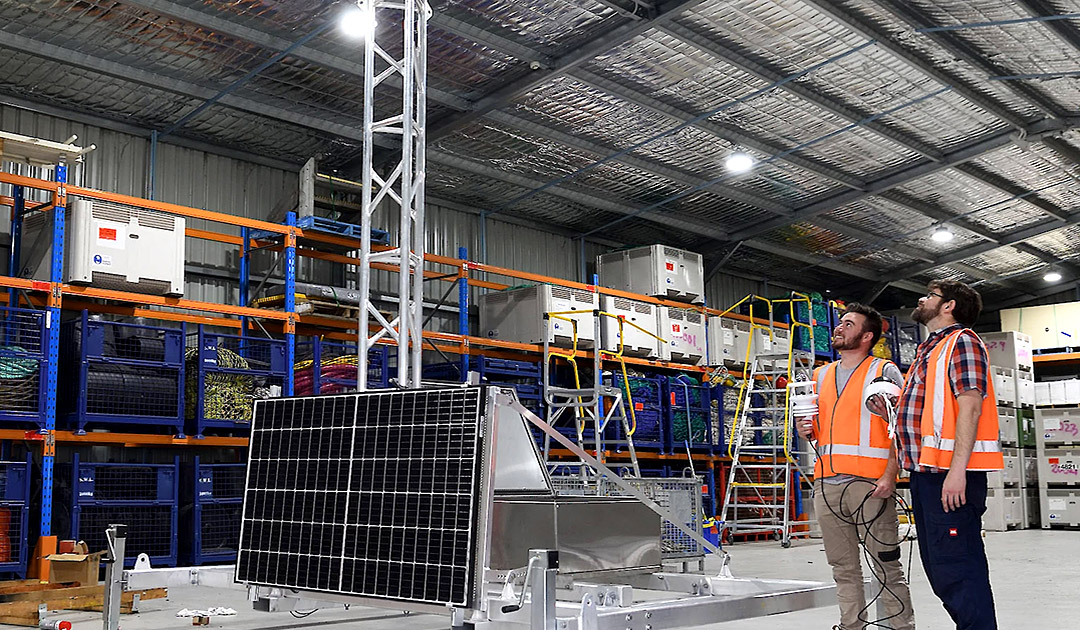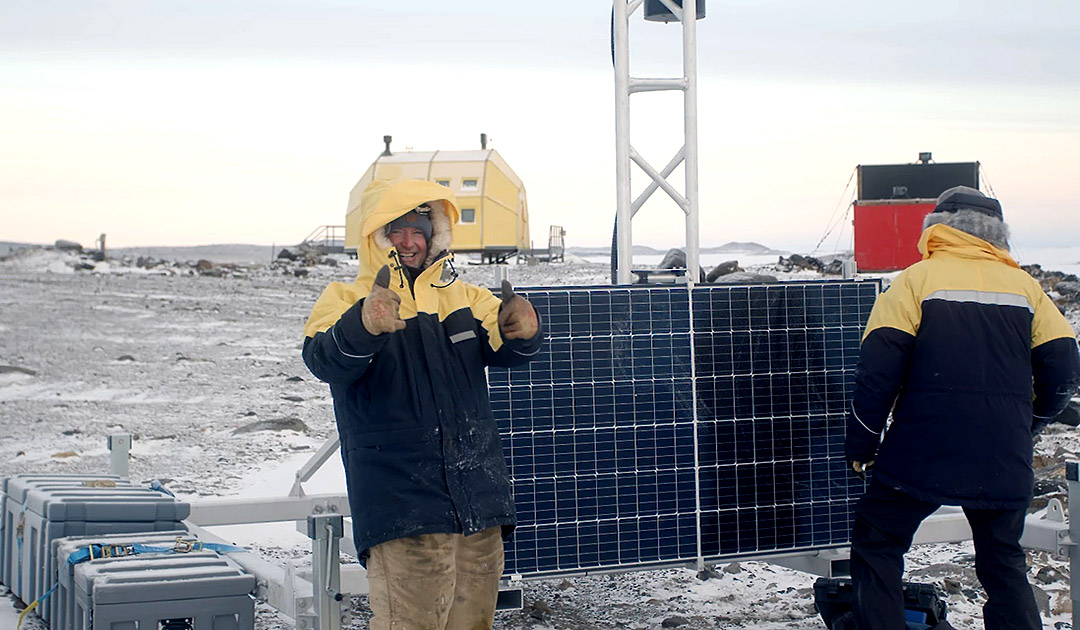
The Australian Antarctic Division will deploy three high-tech automated weather stations with cameras and satellite communications in remote parts of East Antarctica and Subantarctica.
The units, named “ARTEMIS” in recognition of the Greek goddess of wilderness, nature and wild animals, will improve environmental monitoring in locations that are remote from Australia and cannot be accessed in winter, including the Larsemann Hills, Bunger Hills and Heard Island.

AAD Polar Technology Manager Lloyd Symons said the units will collect weather data useful for climate research, such as snowfall, wind speed and temperature.
“Along with weather information, “ARTEMIS” can help managing and utilizing our remote infrastructure at field sites to determine if or when they need maintenance,” Symons says.
“The units send regular images via satellite to AAD headquarters during the summer and can be reprogrammed remotely to adjust the observation schedule as needed.”
“Depending on their location, photos and videos will also provide important information about local populations of seabirds and other wildlife to support environmental monitoring in Antarctica.”

“ARTEMIS” was designed by engineers in AAD’s Technology and Innovation Department in Hobart, with some manufacturing done in Queensland.
Each unit consists of a 650-kilogram square steel and aluminum frame with mounts for a rooftop solar panel and satellite antenna.
A four-meter high mast rises above the frame and houses two cameras and a weather sensor with ultrasonic wind measurement.
AAD Electronics Design Engineer Mark Milnes said his team developed “ARTEMIS” to cope with the extreme conditions of Antarctica.
“The weather sensor measures wind speed and direction based on sound, as well as temperature, humidity, precipitation and pressure,” said Mark Milnes.
“It’s important that the sensor has no moving parts and can withstand temperatures of minus 52° Celsius and wind speeds of more than 270 kilometers per hour.”

Eyes in Antarctica
Directly below the weather sensor is a 25x zoom camera with 360-degree view and a second, smaller camera that moves in and out of a protective housing.
“We have two cameras for redundancy, and we’ll probably run them for a few minutes every hour at different times,” Mark Milnes said.
“They run on a pre-programmed schedule, but we can adjust their timing and field of view in real time from Tasmania.”
In summer, the solar panel provides the energy, and in winter and in the dark, a battery ensures the operation of the system.
While the data and images collected can be stored securely in the instrument, the goal is to enable near real-time transmission via satellite to where they are needed through the Australian Antarctic Data Center.
The first “ARTEMIS” was delivered to Davis Station for testing in early 2022 before being deployed to Larsemann Hills later that year. Additional units will be deployed in subsequent years.
All installations undergo environmental impact assessments and are managed by scientific experts and managers working together to understand and protect the unique Antarctic and sub-Antarctic environment.
Press Release: Australian Antarctic Division (AAD)





